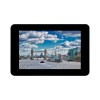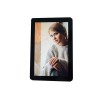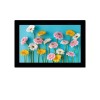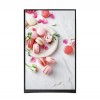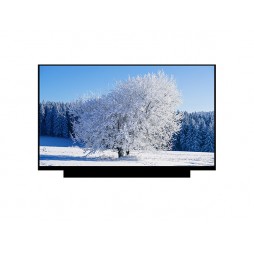Products
7 inch 800x480 RGB interface lcd tft display touch panel
7.0 inch LCD 800xRGBx480 resolution with RGB/MCU interface LCD Module for tablet PC
Product advantages: RGB, high brightness display
LCM Model: R70001-800480RZ-TP
LCD Size:7.0inch
LCD Resolution:800x480
LCM Interface:RGB
Display view angle: 6 O'CLOCK
Display brightness: 250nits
Touch panel: capacitive touch screen
7inch TN LCD 800x480 TFT LCD screen parameters:
|
Item |
Specification |
Unit |
|
LCD screensize |
7.0 |
inch |
|
Display Mode |
Normally White |
-- |
|
Resolution |
800x(RGB)x480 |
Pixel |
|
Pixelarrangement |
RGB Vertical Stripe |
|
|
Viewingangle |
6 O’clock |
- |
|
Module outline dimension |
165 (W) x100(H) x7.44(T) |
mm |
|
LCD AA |
154.08 (W) x85.92 (H) |
mm |
|
DisplayColors |
16.7M |
colors |
|
Driver IC |
- |
- |
|
LCDInterface |
RGB |
-- |
|
Luminance |
250(TPY) |
cd/㎡ |
|
Backlight Arrangement |
White LED |
-- |
|
Touch IC |
GT911 |
-- |
|
Touch point |
5 point touch |
-- |
|
Touch structure |
GG |
-- |
|
Touch Interface |
I2C/IIC |
-- |
|
Cover lens |
glass |
mm |
|
Surface hardness |
6H |
-- |
|
Cover lensColors |
White/Black |
-- |
|
Weight (LCM/TP+LCM) |
TBD |
g |
|
Operating Temperature |
-20℃~ +70℃ |
Deg.c |
|
Storage Temperature |
-30℃~ +80℃ |
Deg.c |
What is the difference between TFT and OLED?
TFT (Thin Film Transistor) and OLED (Organic Light Emitting Diode) are two different types of display technologies, each with its unique characteristics and applications. Here's a breakdown of the key differences between them:
1. Technology:
TFT is not a type of display itself but rather a technology used in the control of pixels in LCD (Liquid Crystal Display) screens.
A TFT display uses transistors to control the individual pixels' brightness by controlling the voltage applied to liquid crystals, which either allow or block light to create the image.
Common types of TFT displays include IPS (In-Plane Switching) and TN (Twisted Nematic).
OLED is a self-emissive display technology where each pixel generates its own light.
It uses organic compounds that emit light when an electric current is applied, eliminating the need for a backlight.
OLED displays are known for their deep blacks, high contrast ratios, and vibrant colors.
2. Image Quality:
TFT LCDs offer good color accuracy and sharpness, but they typically do not achieve the same contrast levels as OLED.
Blacks on TFT LCDs can appear more like dark grey because the liquid crystals can’t block all the backlight.
OLED displays can achieve true blacks because individual pixels can be turned off completely, resulting in higher contrast ratios.
They offer more vibrant colors, wider viewing angles, and better performance in displaying fast-moving images.
3. Power Consumption:
TFT LCDs generally consume more power than OLED displays, especially when displaying darker images since the backlight is always on.
OLED displays can be more power-efficient when displaying dark content because black pixels do not emit light.
However, displaying bright content on OLEDs can be more power-consuming.
4. Durability and Lifespan:
TFT LCDs are generally more durable and have a longer lifespan because they do not suffer from issues like burn-in.
OLED displays can suffer from burn-in, where static images can leave a permanent ghost image on the screen.
The lifespan of OLED displays can be shorter, particularly for the blue organic material, which degrades faster than the red and green materials.
5. Cost:
TFT LCDs are typically less expensive to produce, making them more common in budget and mid-range devices.
OLED displays are generally more expensive to manufacture, leading to their use in higher-end devices like premium smartphones and TVs.
6. Applications:
Commonly used in computer monitors, budget smartphones, tablets, and other consumer electronics.
Used in high-end smartphones, TVs, smartwatches, and other premium devices.
Summary:
TFT is a technology used to control pixels in LCD screens, known for durability and affordability.
OLED is a self-emissive display technology known for superior image quality, true blacks, and vibrant colors, but it tends to be more expensive and has potential issues with burn-in.
7inch lcd module dimension RGB interface:


